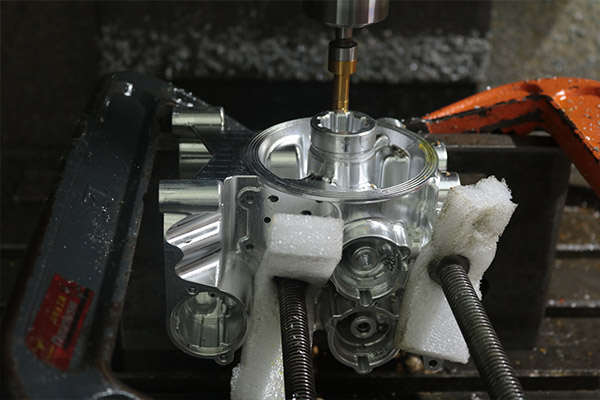Get in touch.
Dear,I will reply in 12 hours. All your message are protected!
Rapid Prototyping Services, Professional manufacturer of CNC Prototyping and 3D Prototyping in China.
CNC machining is widely used for its precision and versatility, and one common application is the machining of stainless steel. When it comes to machining bottom cuts in stainless steel, there are specific considerations and techniques to ensure optimal results. In this article, we will explore the steps and best practices for machining stainless steel bottom cuts using CNC technology.

1.Material Selection:
Selecting the right stainless steel grade is essential for machining bottom cuts. Consider the specific requirements of your project, such as corrosion resistance or strength, and choose a stainless steel grade that fits those criteria. Common stainless steel grades for machining include 304, 316, and 17-4 PH, among others.
2.Tooling Selection:
Choosing appropriate cutting tools is crucial for machining stainless steel bottom cuts. High-speed steel (HSS) or solid carbide tools are commonly used due to their hardness and heat resistance. Select tools with sharp cutting edges and proper geometry for effective chip evacuation. Consider using coatings like titanium nitride (TiN) or titanium carbon nitride (TiCN) to enhance tool life and reduce friction.
3.Feeds and Speeds:
Stainless steel is known for its hardness and work hardening properties. Therefore, optimizing cutting parameters is vital to achieve efficient machining. Consult the tool manufacturer's recommendations for feeds and speeds, and consider starting with conservative values. Gradually increase the cutting speed and feed rate, monitoring the tool's performance and ensuring chip evacuation.
4.Coolant and Lubrication:
Coolant and lubrication play a crucial role in machining stainless steel bottom cuts. They help dissipate heat, reduce friction, and flush away chips. Consider using water-soluble coolant or cutting fluids specifically designed for stainless steel machining. Apply the coolant directly to the cutting zone or use through-tool coolant delivery if available.
5.Toolpath Strategy:
Carefully plan the toolpath strategy to ensure optimal tool engagement and chip evacuation during bottom cutting operations. Consider using multiple passes with gradually increasing depths of cut to avoid excessive tool deflection and reduce the risk of chatter. Analyze the geometry of the component and select the appropriate toolpath, such as contouring or pocketing, to achieve the desired results.
6.Quality Control and Surface Finish:
Regularly inspect the machined bottom cuts to ensure dimensional accuracy and surface finish. Use precision measuring instruments such as micrometers or calipers to verify critical dimensions. Pay attention to the surface finish by visually inspecting for any tool marks or defects. Consider additional finishing processes such as sanding or polishing to achieve the desired surface smoothness and appearance.
© 2005-2025 Shenzhen Tuowei Model Technologies Co., Ltd. | All Rights Reserved 粤ICP备11096697号